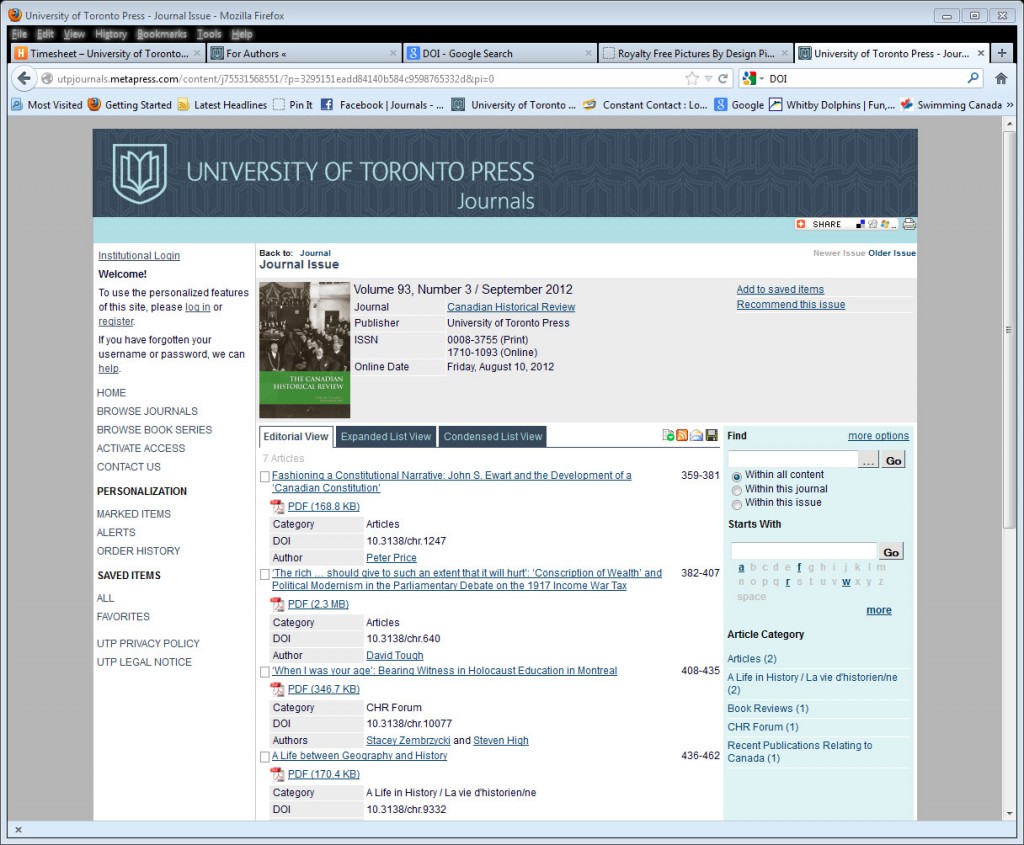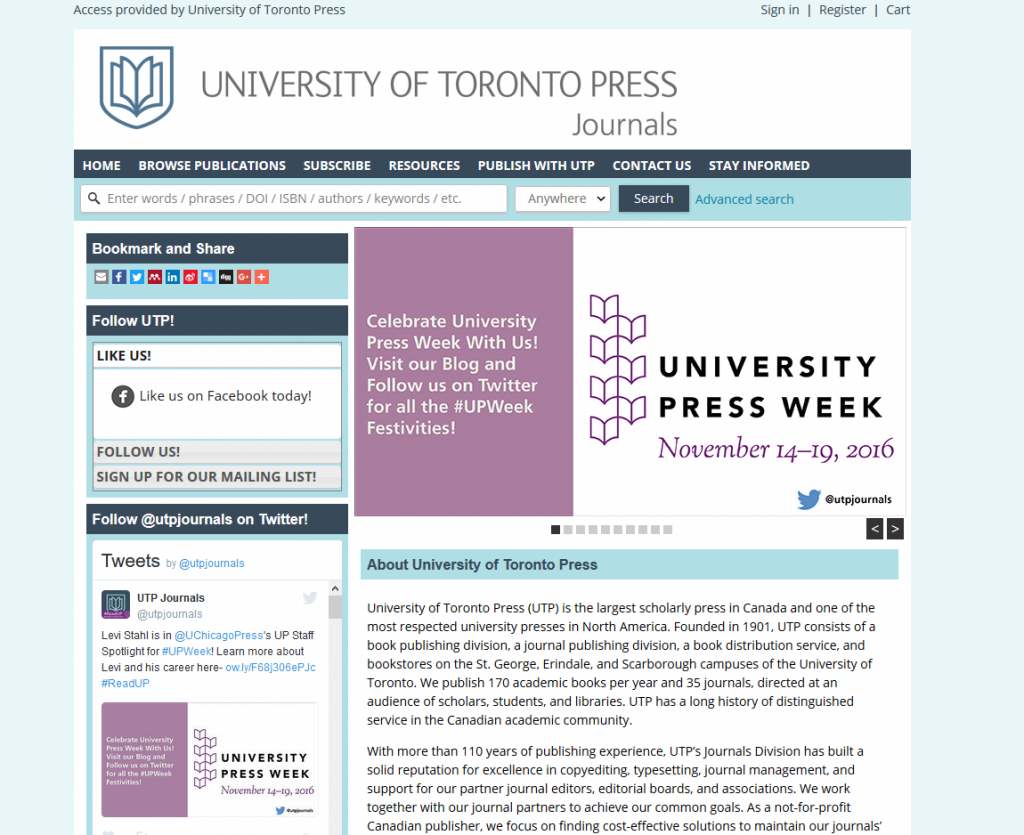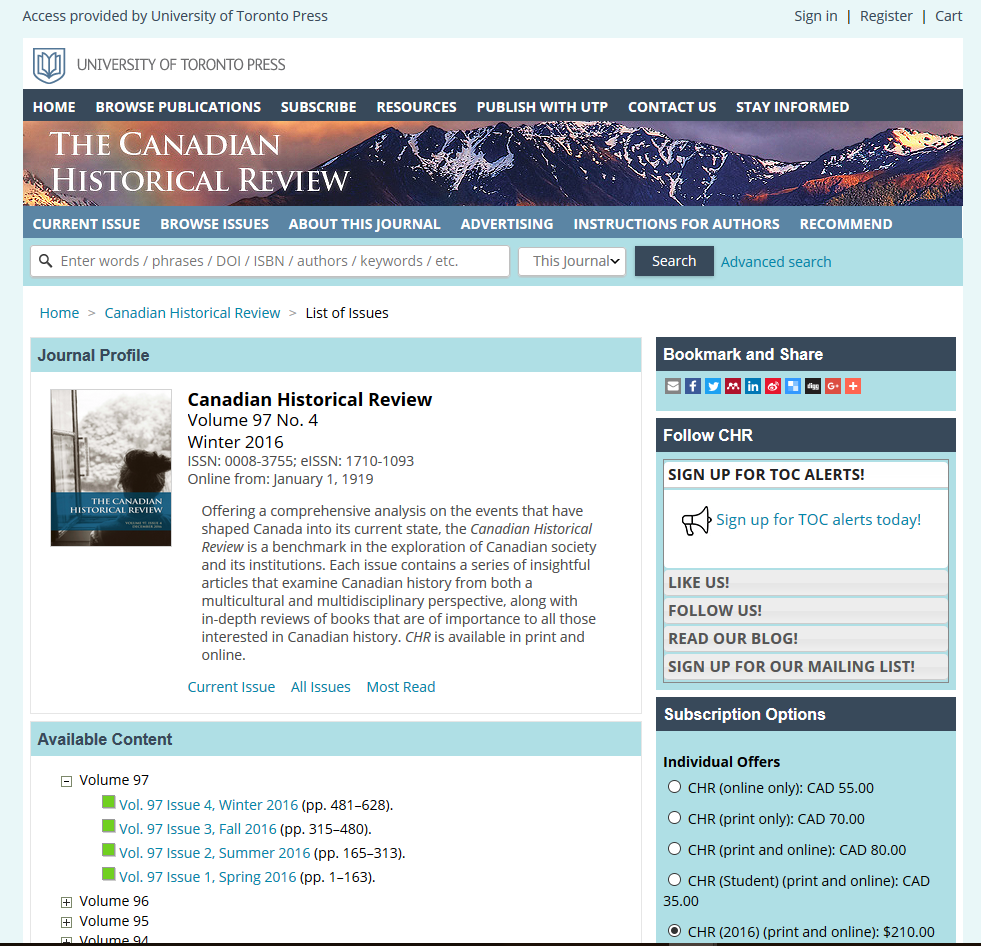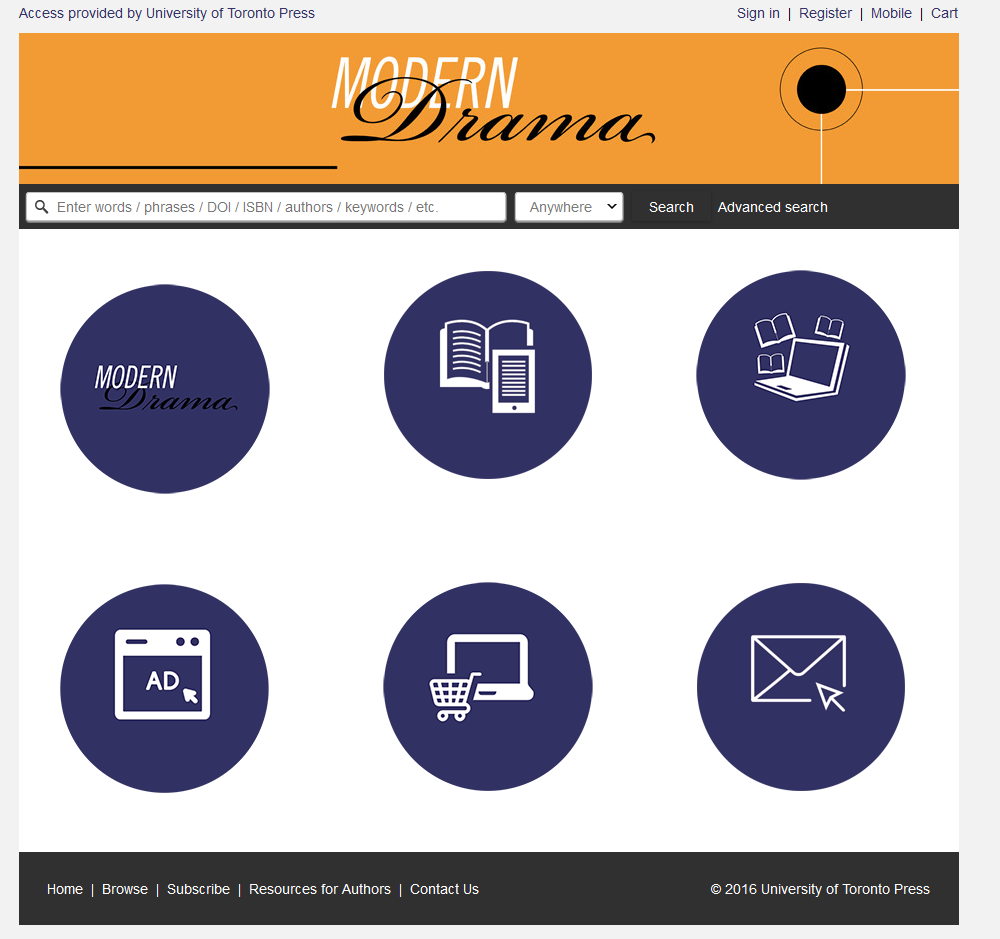To celebrate our participation in the 5th annual University Press Week blog tour, we’re looking back at the future of online publishing in the journals industry! Yes, you read that right…we’re “looking back at the future.” In this #UPWeek post, we look back at our very first online platform as well as flash forward to our current platform. Take a look at all the advancements that have been made and not only how far digital journals publishing has come, but the online reading community!
In 2006, the first of UTP’s journals were made available online. These titles included the Canadian Historical Review, Cartographica, Canadian Journal of Criminology and Criminal Justice, Canadian Public Policy, Journal of Scholarly Publishing, the Journal of Veterinary and Medical Education, and University of Toronto Quarterly. Back then, the functionality of our online platform was nothing compared to what it is today. It simply acted as a content host, users would visit the site, find the journal they subscribe to, and downloaded their content. There was not a lot of opportunity to personalize the users experience, therefore leaving it very difficult to build an online reading community. No tools for advertising, web design, and specialized access options were available. Nevertheless, it was an exciting time and digitizing our first journals meant new opportunities were on the horizon. Take a look at what the Canadian Historical Review page looked like in 2012:
Online platforms have come quite a way since then. In 2015, our journals migrated to Atypon’s Literatum platform which opened the door to interacting and building relationships with our readers at a more advanced level. Some of our publications even have customized websites which give them the capability to customize each user’s experience specific to that journal’s branding. With the migration came a whole new list features to improve each reader’s experience as well as a multitude of new capabilities such as website development tools, content targeting, rapid product creation, subscription modeling, eCommerce, and analytics. Each of these new tools have played a key role in improving our digital marketing strategy in order to reach readers. Users now have the ability to see which journal articles are the most cited and most downloaded, receive customizable Tables of Contents alerts, share research on social media, and access a rich mobile experience. In addition, Literatum supports several standards that researchers and librarians expect to find on a comprehensive publishing platform, including ORCID, CrossRef, CrossCheck, JATS DTD, Shibboleth, COUNTER, and MARC. Needless to say, the developments made in this field within the last decade or so has revolutionized the scholarly readers experience, and it can only get better from here!
Feel free to explore our new website if you haven’t already (www.utpjournals.press) or you can take a look at some featured images below:





Comments on this entry are closed.